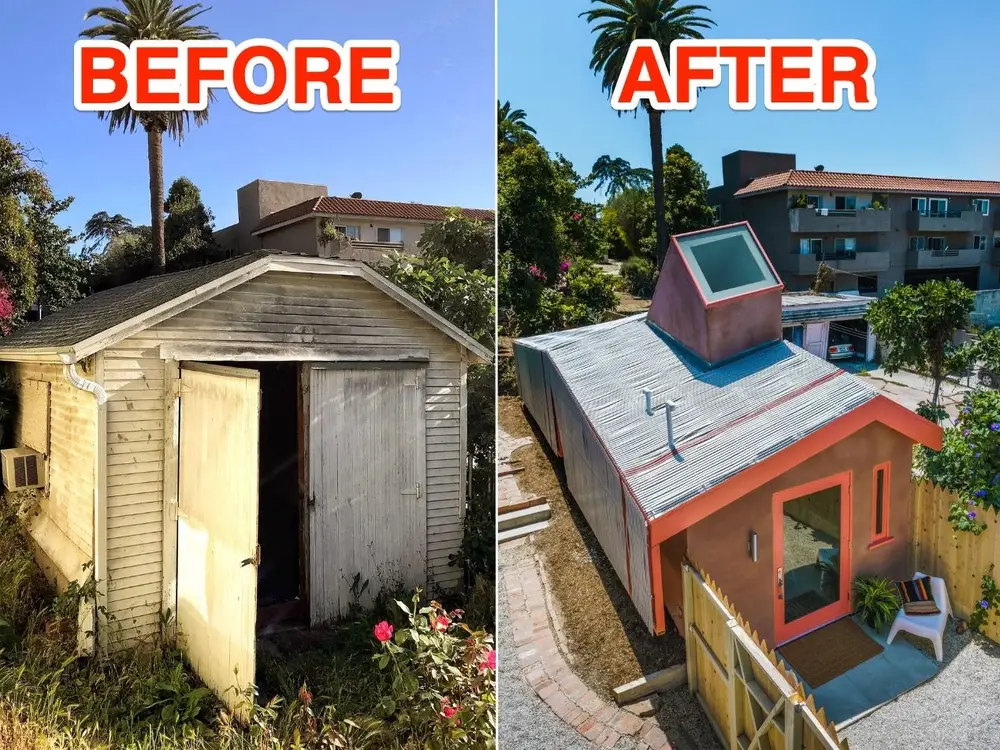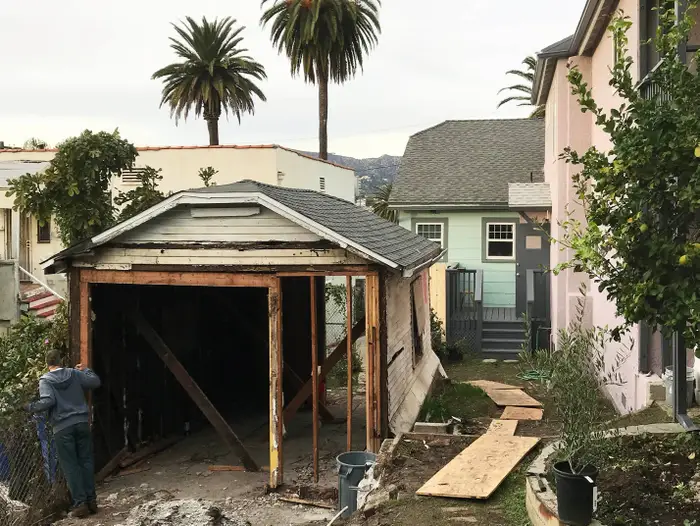With a budget of $20,000, two young architects turned a ‘murder shed’ into a quirky tiny home in LA. Take a look inside.
Insider had an exclusive conversation with Corie Saxman, a 30-year-old architect, and Keith Marks, 33, as they embarked on an ambitious project: the transformation of a dilapidated shed in Silver Lake, Los Angeles, into a modern ADU (Accessory Dwelling Unit).

Their collaboration with owner Roger Merians commenced in 2018 when he reached out to them via Instagram. Saxman and Marks, both partners at the architectural firm Ham Design Group, reminisced about their meeting during graduate school and affirmed that this project marked their first independent endeavor together.
Marks recalled the initial message from Merians as a “cold” one, noting that it referenced their previous work and invited them to undertake a unique and unconventional project.

Despite the shed’s less-than-ideal condition, situated on the same property as the client’s home, Saxman and Marks admitted that they were not immediately enamored with it. In fact, they humorously dubbed it “the murder shed” from the outset, fully aware of the significant renovation work that lay ahead.
However, the architects found solace in their collaboration with Merians and Gregory Strait, the initial clients for the project, who proved to be receptive to their innovative ideas while also contributing their own.

Reflecting on the advantages of starting with an existing structure, Marks highlighted how it minimized setbacks, particularly in Los Angeles where regulations can be stringent. Retaining certain elements of the original shed, such as a wall running across the property, allowed them to achieve the desired size and massing for the ADU.
In an unconventional twist, the choice of the building’s coral-pink color was made by Merians and Strait before any architectural plans were drawn up—a decision that delighted the architects and added a unique flair to the project.

Through their conversation, Saxman and Marks offered insights into their creative process, highlighting the collaborative spirit that drove the successful transformation of the “murder shed” into a contemporary living space.

